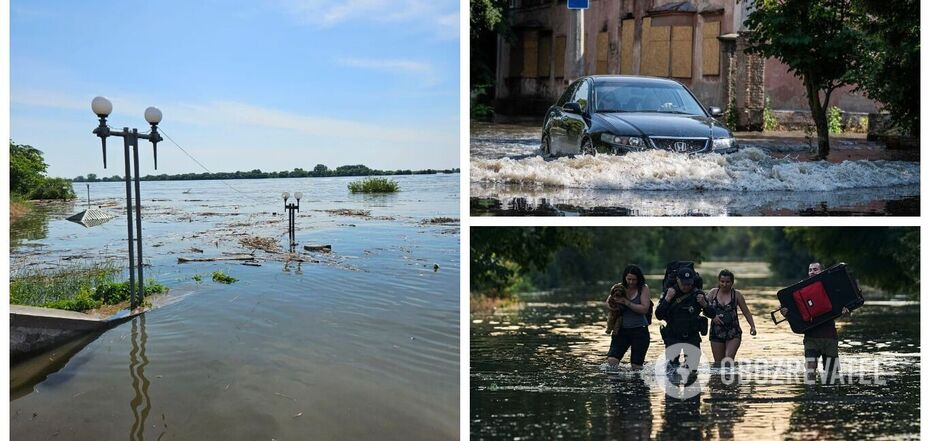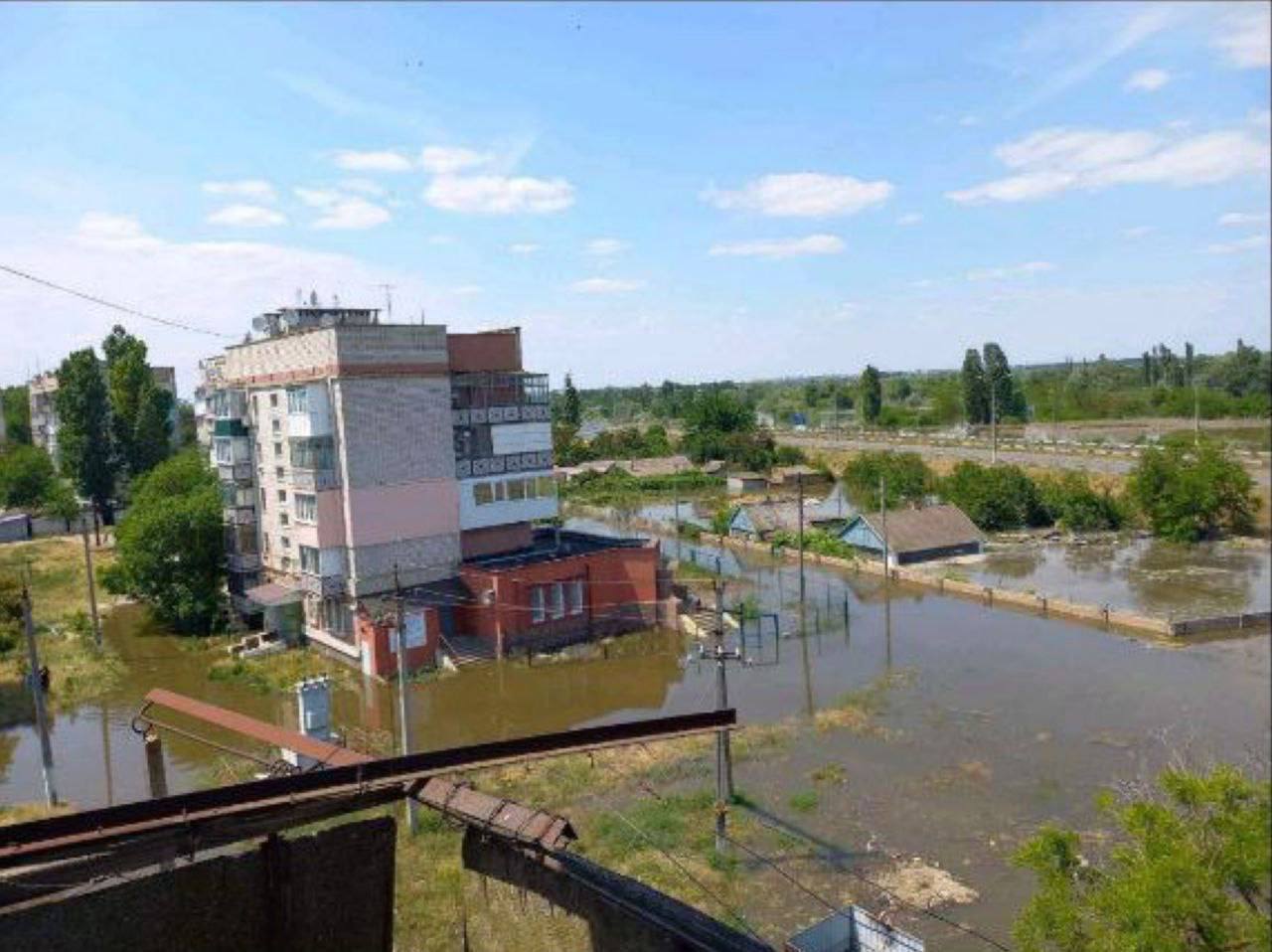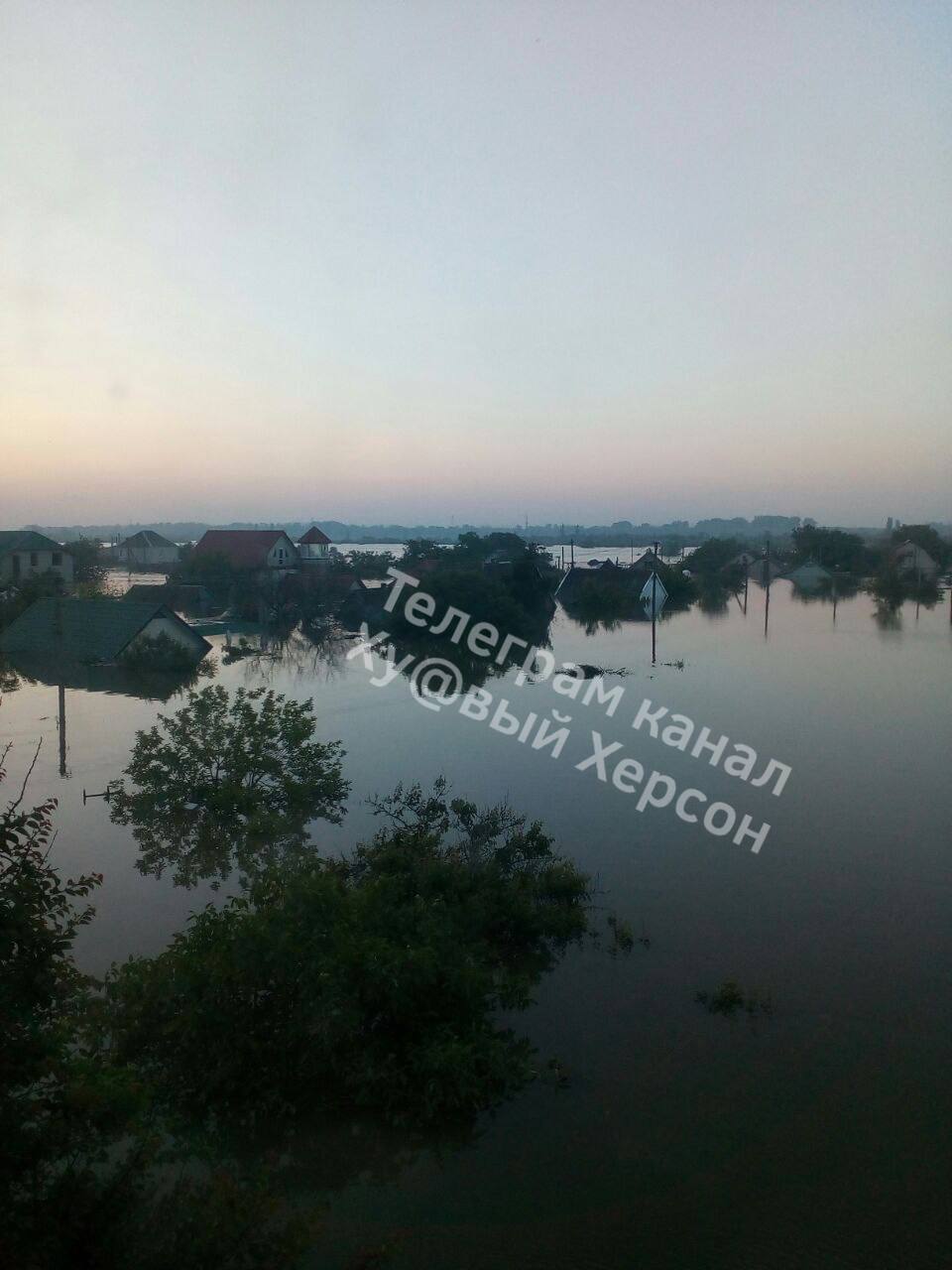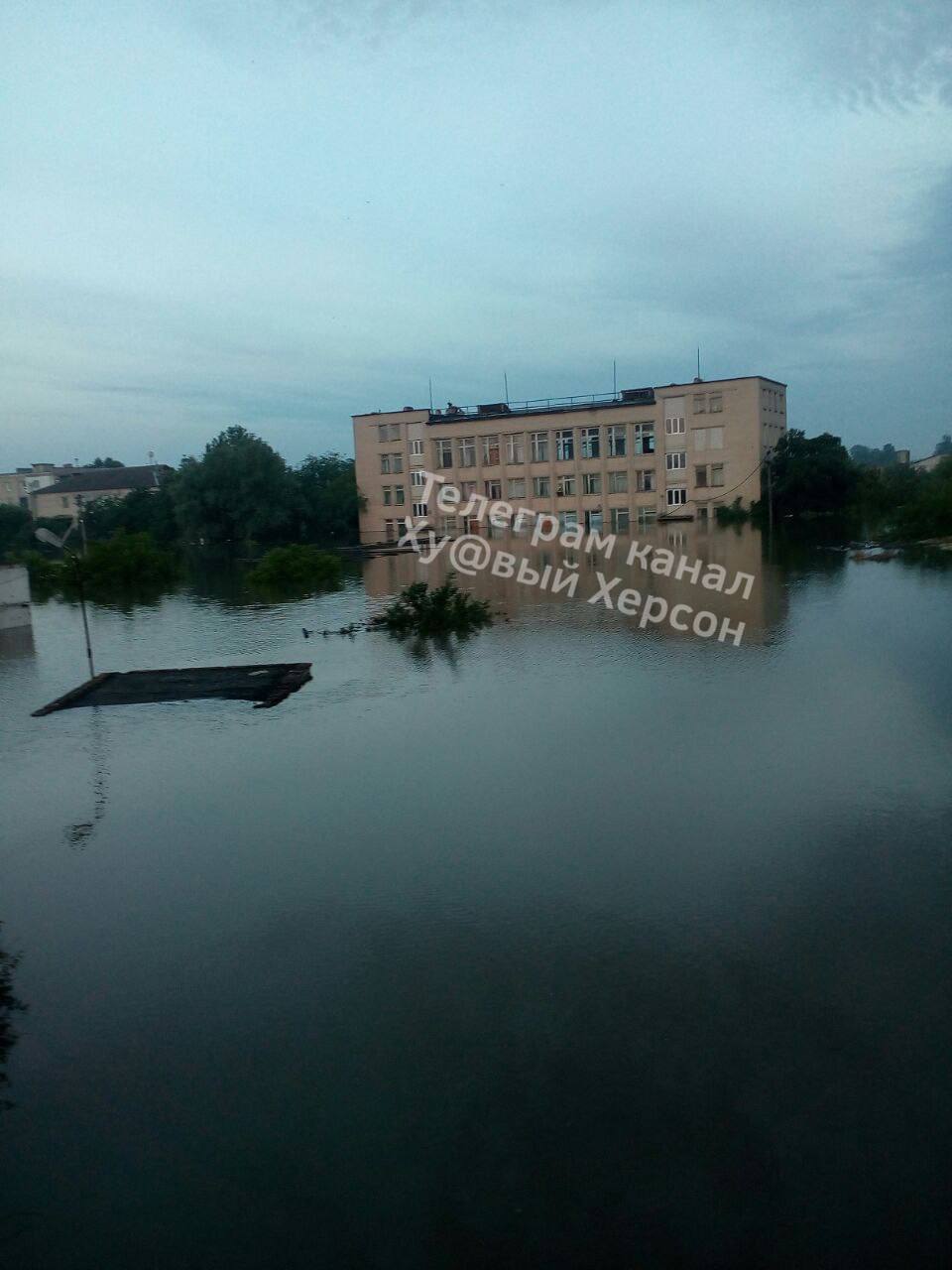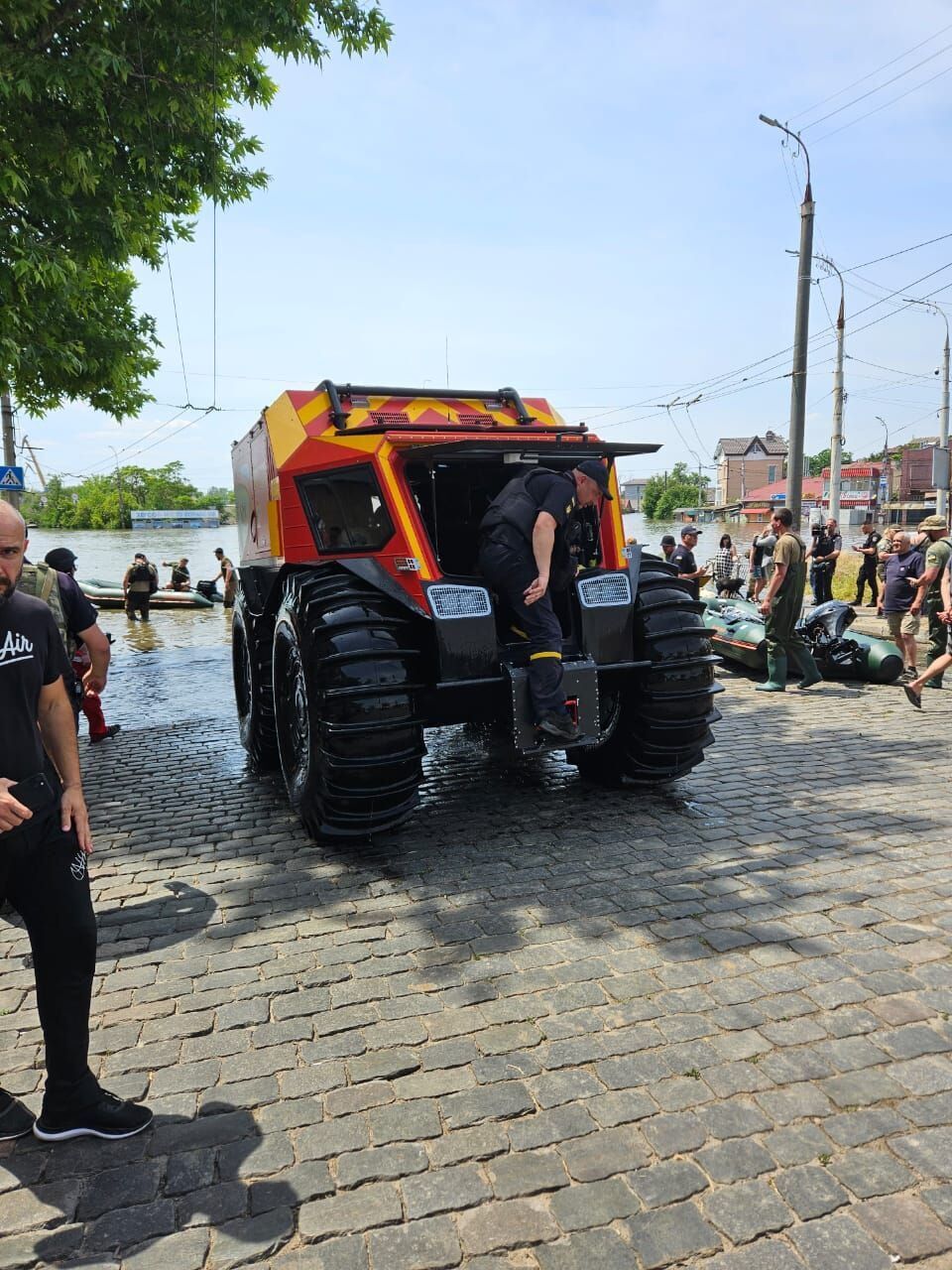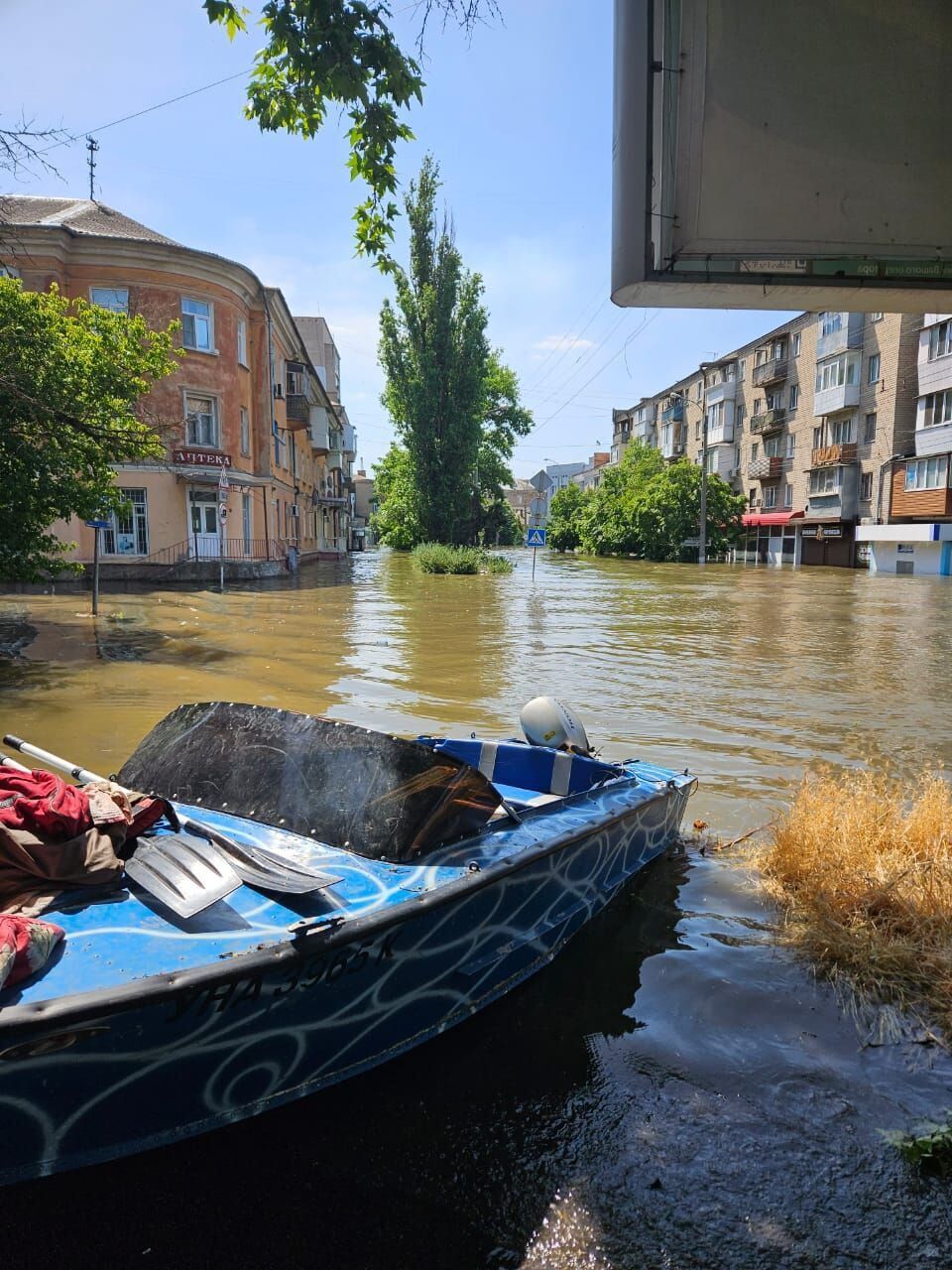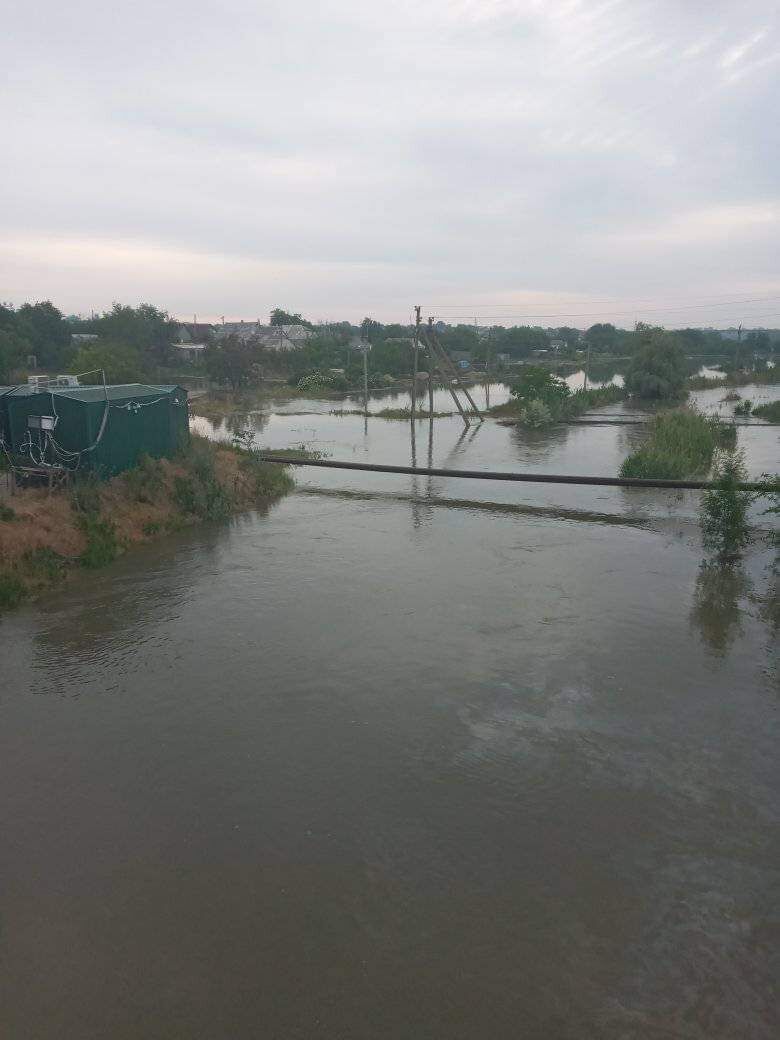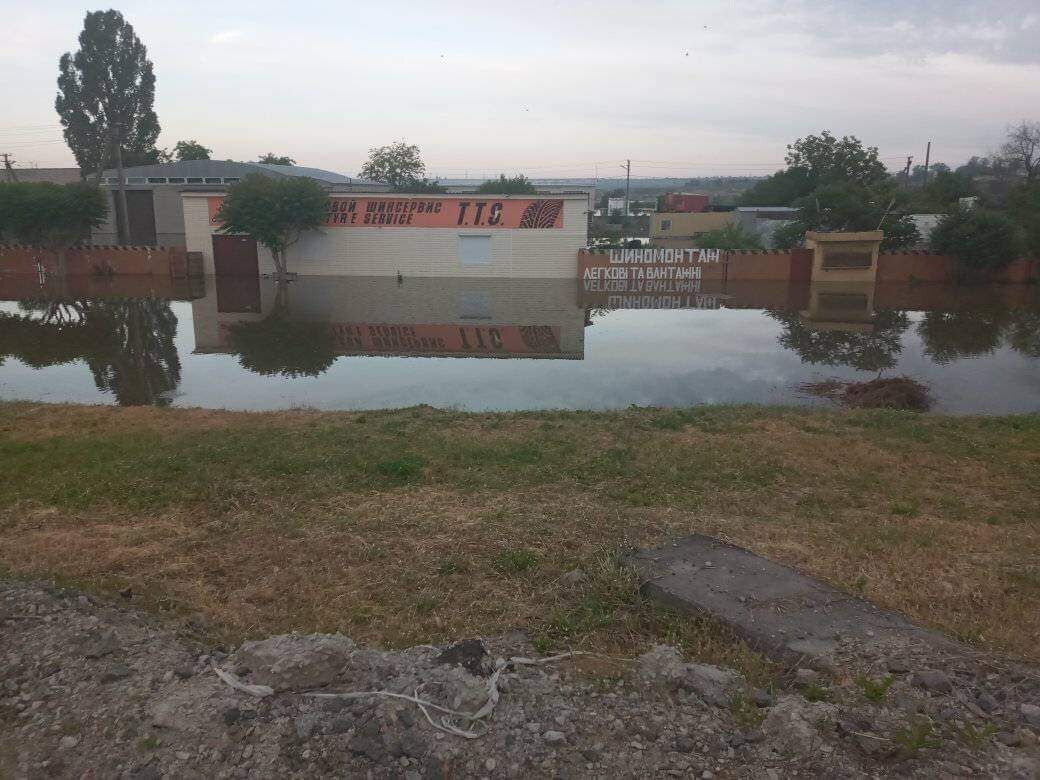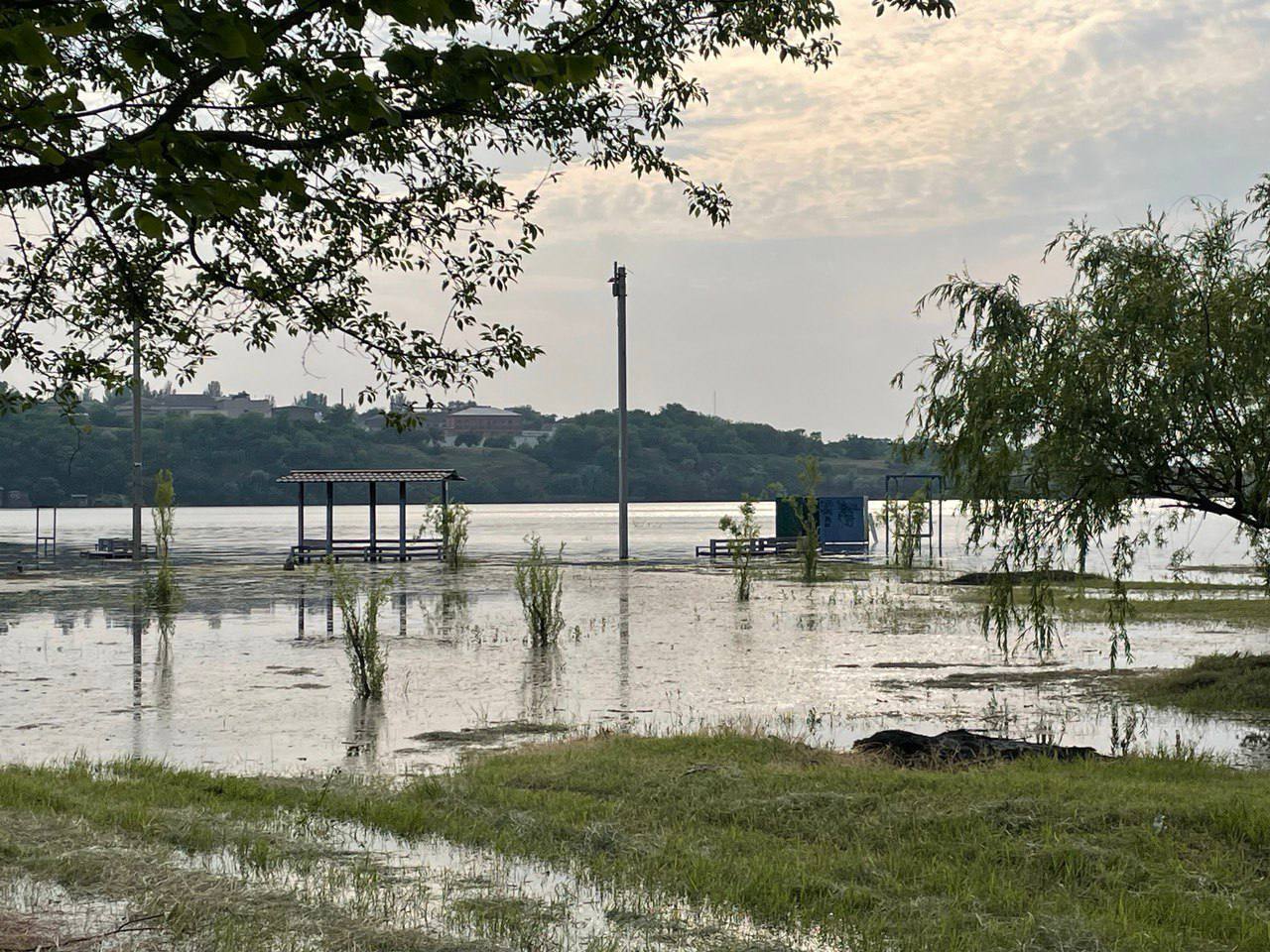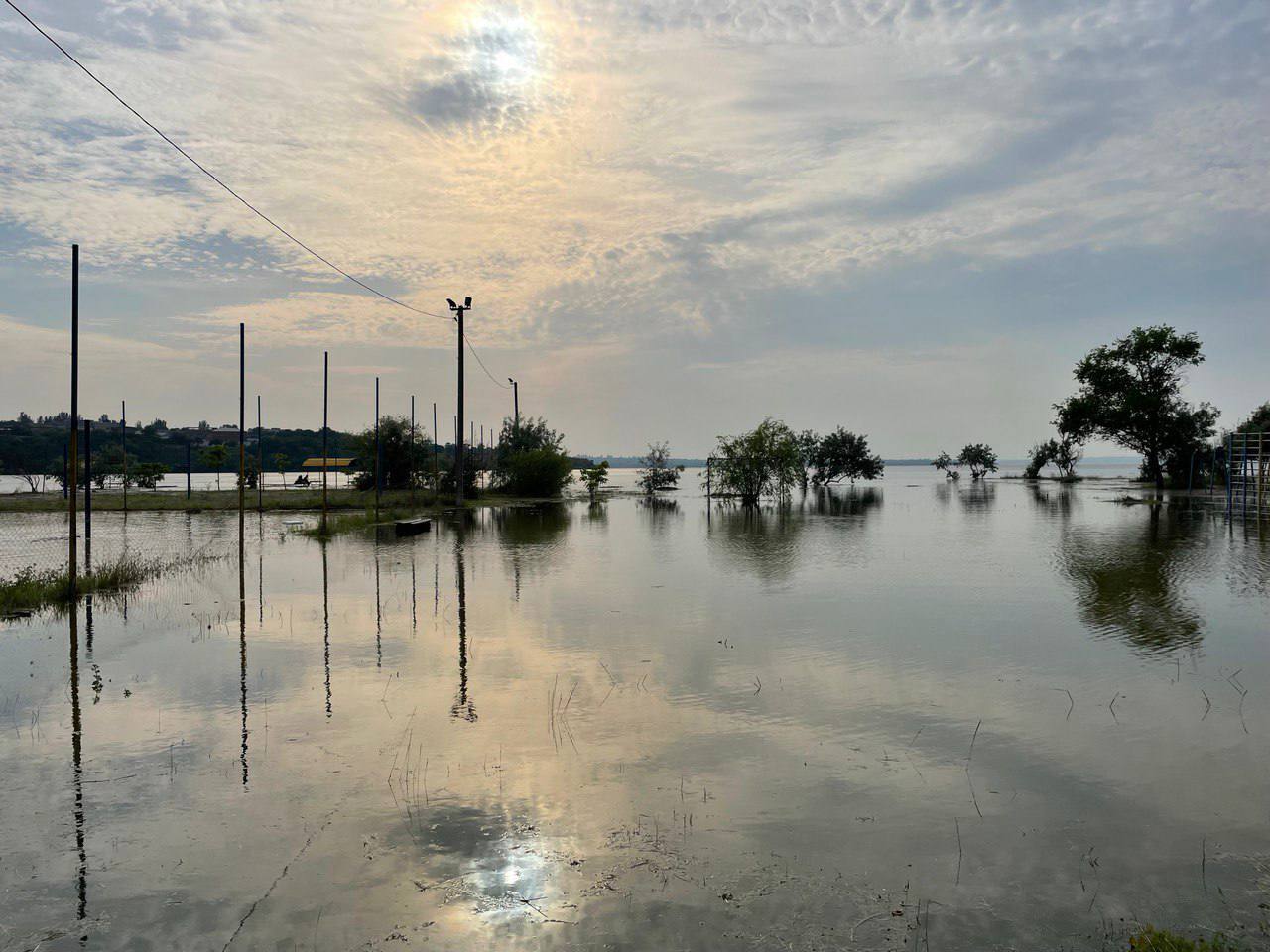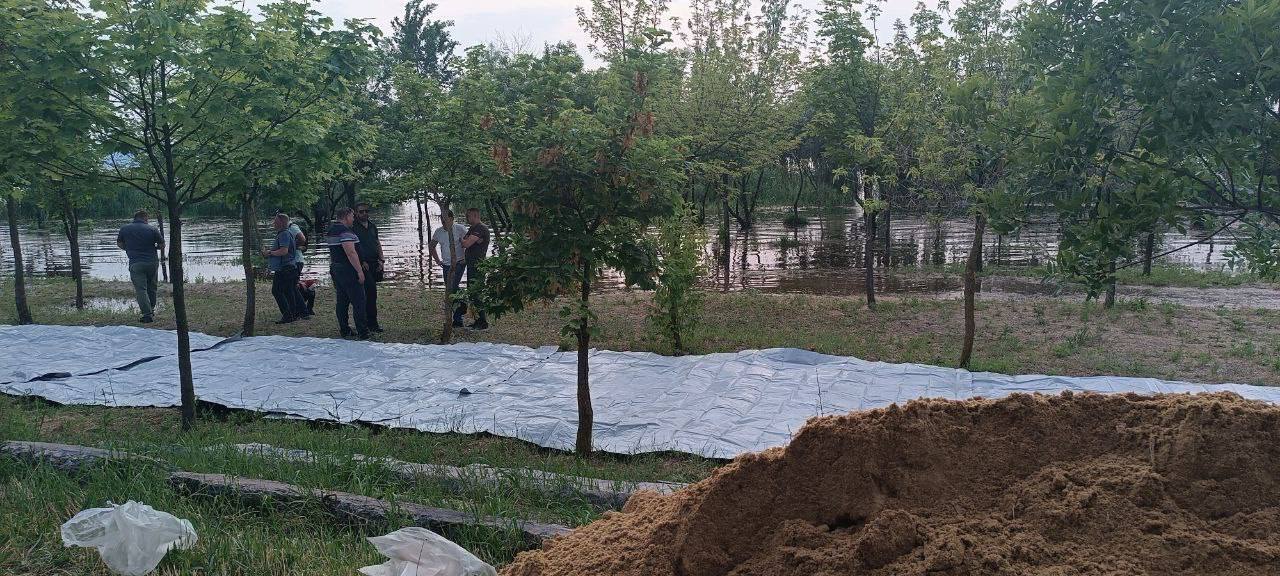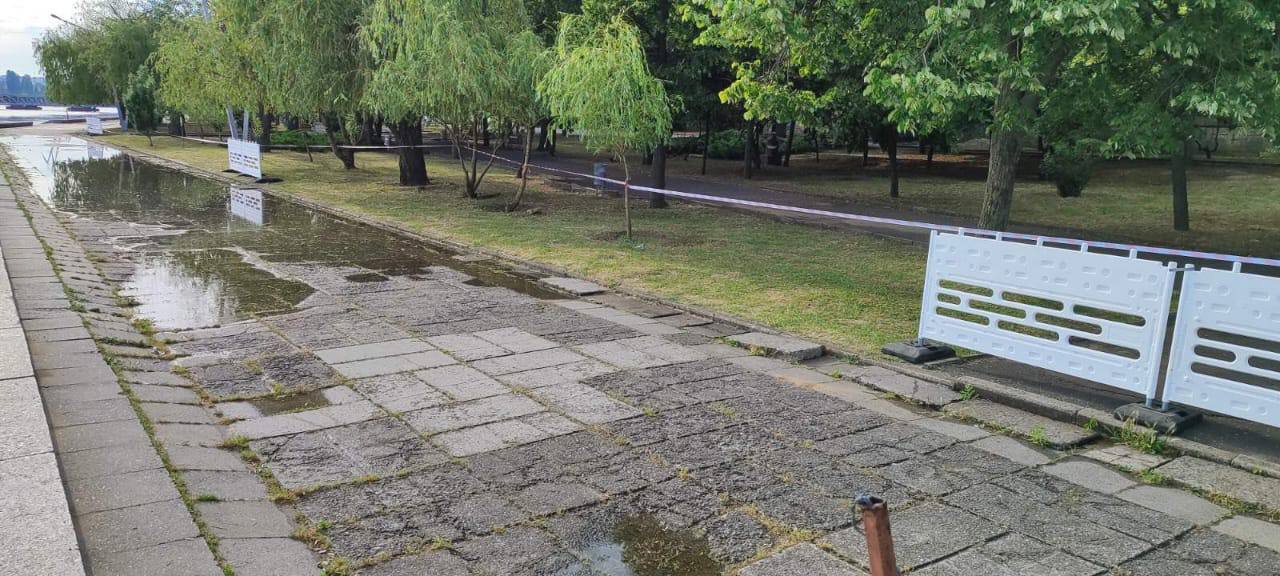War in Ukraine
Oleshky flooded by 90%, water level in Hola Prystan reaches more than three meters: people are trapped (updated)
On the night of June 6, the Russian occupation army committed an act of terror at the Kakhovka hydroelectric power plant, which led to a large-scale man-made disaster. The consequences of the inadequate actions of the Russians will affect many regions of Ukraine, but the Kherson region was the worst hit by the occupiers.
Most settlements along the Dnieper River were significantly flooded, and some small villages were completely submerged. OBOZREVATEL monitors what is happening in Kherson region after the Russian terrorist attack and what consequences the Ukrainians face.
Ukrhydroenergo reported that as of the morning of June 8, the water level in the Kakhovka reservoir continues to drop. As of 8 am, the level of the reservoir near Nikopol is 13.05 meters. During the day the water level in Kakhovka reservoir decreased by more than one meter.
It is also noted that the destruction of the spillway dam, the earthen insert between the station building and the sluice. To reduce waterlogging, specialists are adjusting the operation mode of hydroelectric power plants and accumulate water above Kakhovka HPP in other reservoirs of the Dnieper cascade.
In addition, "Ukrhydroenergo" together with the design institute "Ukrhydroproject" is working on a project to build the overtopping of the Kakhovka reservoir to restore the water level to the design mark before undermining. Now the list of priority tasks and works is being prepared.
According to Ihor Sirota, the general director of Ukrhydroenergo, as of this morning the water level in the Kakhovka reservoir is 13 meters. This figure is considered critical at Kakhovskaya HPP, after which there will be no possibility of water intake.
"We are reaching the dead zone - 12.70 meters, after which there will be no possibility of water intake neither for the ponds at Zaporizhzhia NPP, nor for the regions," said Sirota.
Oleski
The town of Oleshki on the left bank of the Kherson region, which is 4 km from the Dnieper shoreline, is already 90% flooded after the Russians blew up the Kakhovka HPP. According to Mayor Yevhen Ryshchuk, the Russian terrorists not only fail to evacuate, but also prevent people from saving themselves. The invaders do not allow people to get out of the city.
It is worth noting that the city consists mainly of the private sector, and many houses are already flooded almost under the roof. In the streets, the water level reaches three meters.
"People from some localities write and call me that the Russians are not letting people out who want to leave themselves. Therefore, people have been sitting on the roofs since yesterday night. In addition, when the Russians came to the towns and villages, they confiscated all the boats from the population. That is, finding boats is a problem," said Ryshchuk.
In the evening of June 7, the mayor said that the first victims of the flooding of the city are already known. However, due to the occupation and lack of communication, it is impossible to know at least an approximate number of victims.
Ryshchuk also added that on June 7, 120 people were admitted to a local hospital with hypothermia. The mayor specified that now there are three dead, but the number of victims is likely to be higher.
The mayor of Oleshky emphasized that all 13 settlements of the territorial community are flooded. According to the mayor, the occupation authorities are still not evacuating.
The footage taken from a drone shows almost no houses in Oleshky. Water has swallowed up many buildings. There is no communication with many local residents. Before the war, more than 25,000 people lived in this village.
Hola Prystan
Left bank Hola Prystan, as well as Oleshki, was significantly affected by flooding. The water level in some areas of the city rose to three meters.
At the same time, even in the area that is above the shore, the water level reaches more than a meter. In the photos taken a day after the terrorist attack on the Kakhovka hydroelectric power plant, you can see only the tops of private houses. Multi-story houses in Goloy Pristan were also half-flooded.
This locality is also under temporary occupation by Russian terrorists, so local residents were held hostage by the large water. Despite the occupation administration's false and cynical statements about evacuation, local residents have had to flee on their own. However, many people are unable to get out on their own.
The only thing the occupiers did in Hola Prystan was to document from a drone the consequences of their latest crime against humanity. In the footage published by the Russians, the town, with a pre-war population of about 14,000 people, has actually turned into a huge lake, out of which the roofs of houses can be seen in some places.
Kherson
According to the head of the Kherson regional military administration Oleksandr Prokudin, as of the morning of June 8, the average waterlogging level in the region is 5.61 meters. An area of 600 square kilometers was under water.
It is noteworthy that the left bank of the region, which is temporarily controlled by the Russian terrorist troops, was twice as affected. There 68% of the area was flooded, while 32% of the right bank out of the declared 600 square kilometers was under water.
After the terrorist attack, an evacuation was promptly organized from Kherson. The morning after the Russians blew up the Kakhovskaya HPP dam, the first train with Khersonians left for Nikolaev.
A large-scale rescue operation continues in the regional center. Residents of several neighborhoods along the Dnieper shoreline were most affected by the water. Locals tell us that besides water as such, there is an equally dangerous problem. The water rushed from Novaya Kakhovka flooded thousands of cesspools, so entire neighborhoods were flooded with feces.
Given the summer heat and the volume of water, people fear that this will lead to large-scale environmental problems and may cause various epidemics.
In a commentary to Suspilne Kherson, locals say that overnight the water rose by tens of centimeters. In particular, on the embankment of the Park of Glory there was about 40 cm of water. Also the water level increased in the area of the river port and Ship Square. Volunteers, police and employees of the State Emergency Service work in the city - the evacuation of people and animals continues.
Villages of Kherson Oblast
Small settlements along the Dnieper River coastline in the Kherson region practically ceased to exist after the Russian terrorist attack on the Kakhovka hydroelectric power plant. In Livi Solontsi, Komyshany, Dniprovske, Korsunka, and many other villages in the Kherson region, almost all civilian homes were submerged.
Local Telegram channels publish horrifying images showing the scale of the disaster. Hundreds of volunteers in watercrafts try to shout to local residents, but for unknown reasons, no one answers from most households. At the same time, over the last 24 hours volunteers have received many calls from people asking for help, but all this was done while there was still some kind of communication and people were already doing it from the roofs of their houses.
The first deputy head of the Kherson regional council Yuri Sobolevsky said that the humanitarian situation in the Kherson region after the terrorist attack on the Kakhovka hydroelectric power plant is extremely difficult.
"The evacuation package of measures on the part of the occupants has failed. No one really addressed the issue of rescuing people. All those pictures of pinching are just a propaganda picture. What's happening there is like the pictures of a horror movie," states the official.
On the morning of June 8, water reached the village of Chornobaivka. Houses of civilians were half flooded. The streets of the village began to fill with water.
The situation in the Mykolaiv region
The consequences of the Russian occupiers' terrorist attack on the Kakhovka hydroelectric power plant have reached Mykolaiv region, among others. According to Mayor Oleksandr Senkevych, as of the morning of June 8, the total increase in the water level in Mykolaiv's waters was 97 cm.
District administrations are currently inspecting the city. In some of the lowest spots, they are reinforcing the coastline near residential buildings. Sienkevych noted that employees of the Department of Housing and Communal Services are inspecting the basements of high-rise buildings. The mayor urged all Mykolaiv residents to be careful and avoid flooded areas.
Meanwhile, local residents are posting photos of the flooding in Mykolaiv online. The water level has risen the most in the Korabelny district, on the Namiv, in Velyka and Mala Korenisa, and on the lower embankment.
According to experts, it is too early to assess the scale of the catastrophe, because the water continues to flow. However, we can already say that the Russians have committed one of the largest and most horrific acts of ecocide in the history of mankind. The ecosystem of the Kherson region will change for many years because of the terrorist attack on the Kakhovka HPP, and some places will never be the same again.
Recall that the destruction of the Kakhovka HPP dam significantly changed the geography and topography of the Kherson section of the front in southern Ukraine and forced the Russian occupiers themselves to retreat from some positions. The enemy forces and the invading authorities responded to the flood with a great degree of disorganization, which increased the damage to the civilian population of the temporarily occupied territories.
Earlier, it was reported that in temporarily occupied Melitopol in Zaporizhzhia, panic broke out among the Russian military themselves after the Kakhovka hydroelectric plant dam was blown up. Most began abruptly changing into civilian clothes and buying food at high prices.
As OBOZREVATEL reported, Ukrainian President Volodymyr Zelensky was extremely unhappy with the reaction of the United Nations and the International Committee of the Red Cross to the bombing of the Kakhovka hydroelectric plant by Russian troops. He admitted that he was shocked by the inaction and overly "diplomatic" comments.
Only verified information in our Telegram channel Obozrevatel and in Viber. Do not be fooled by fakes!


